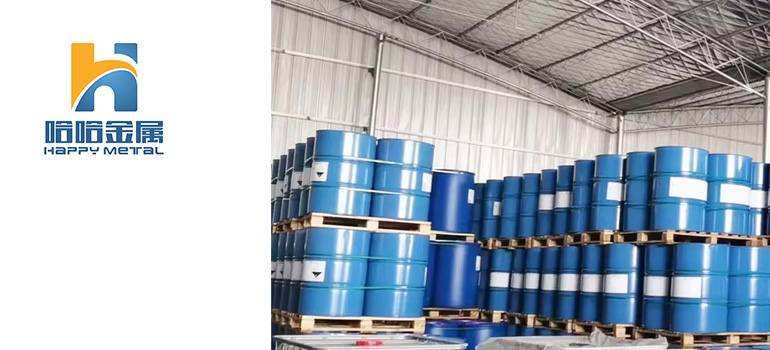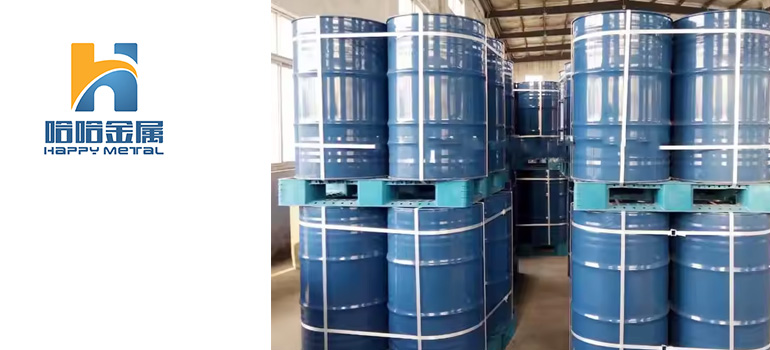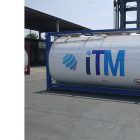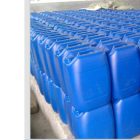Summary:
What is Sodium Methylate 30% Solution? A Comprehensive Guide?
What is Sodium Methylate 30% Solution?
Key Applications of Sodium Methylate 30% Solution
Safety Guidelines for Handling Sodium Methylate 30% Solution
Benefits and Challenges of Using Sodium Methylate 30% Solution
Sodium Methylate 30% solution is a commonly used chemical reagent, widely applied in both industrial and laboratory settings. It consists of 30% sodium hydroxide (NaOH) and 70% methanol (CH₃OH), resulting in a highly alkaline solution. The solution is typically prepared by dissolving sodium metal in methanol. Due to its strong reactivity, Sodium Methylate 30% solution plays a crucial role in various chemical reactions, particularly in organic synthesis and production processes.
What is Sodium Methylate 30% Solution?
As the name suggests, Sodium Methylate 30% solution is a methanol-based solution that contains 30% sodium hydroxide. It is often used in the synthesis of other chemicals and plays an important role as a catalyst in many reactions. The strong alkalinity of the solution enables it to react effectively with other compounds, facilitating numerous organic chemical processes. As a highly alkaline chemical, Sodium Methylate 30% solution is widely used in ester production and acts as a catalyst in many reactions.
Chemical Composition of Sodium Methylate 30% Solution
Chemically, Sodium Methylate 30% solution is a mixture of sodium hydroxide and methanol in a specific ratio. When sodium hydroxide, a strong base, reacts with methanol, it forms sodium methoxide (CH₃ONa) and hydroxide ions (OH⁻), giving the solution its strong alkalinity. This solution is not only used in synthesis processes but also finds applications in a variety of industrial uses, such as biodiesel production and the synthesis of pharmaceutical intermediates.
The Role of Sodium Methylate in Chemical Reactions
In chemical reactions, Sodium Methylate 30% solution acts as a powerful catalyst, commonly used in esterification and transesterification processes. It efficiently removes hydrogen ions from the reaction mixture, driving the reaction forward. For example, in biodiesel production, Sodium Methylate 30% solution helps catalyze the reaction between oils and methanol, producing methyl esters (biodiesel) and glycerol. This process, known as transesterification, is a key step in biodiesel manufacturing. Additionally, Sodium Methylate 30% solution is used in the synthesis of various organic compounds, such as pharmaceutical intermediates and fine chemicals, making it an essential reagent in the chemical industry.
Key Applications of Sodium Methylate 30% Solution

Sodium Methylate 30% solution is an essential chemical that serves various important roles across multiple industries. Its versatility in both laboratory and industrial applications makes it a highly valuable reagent. Below, we explore the key areas where Sodium Methylate 30% solution is most commonly used, demonstrating its significance in modern chemical processes.
Usage in Biodiesel Production
One of the most well-known applications of Sodium Methylate 30% solution is in the production of biodiesel. The transesterification process, which is used to convert vegetable oils or animal fats into biodiesel, relies on the use of sodium methylate as a catalyst. In this reaction, sodium methylate helps break down triglycerides (the fats or oils) by reacting with methanol to produce methyl esters (biodiesel) and glycerol. This process is not only crucial for the renewable energy sector but also significantly reduces the carbon footprint of the fuel. The efficiency of Sodium Methylate 30% solution makes it a preferred catalyst in large-scale biodiesel production.
Role in Organic Synthesis
Sodium Methylate 30% solution is widely used in organic synthesis, particularly for the preparation of methyl esters and other organic intermediates. As a strong base, it facilitates various reactions, such as esterification and deprotonation, which are critical steps in the synthesis of pharmaceutical compounds, agrochemicals, and specialty chemicals. By acting as a base catalyst, Sodium Methylate 30% solution enables the formation of complex organic molecules, making it an essential reagent in the chemical industry.
In addition to ester formation, Sodium Methylate 30% solution is frequently used to synthesize alkylated compounds and initiate nucleophilic substitution reactions. This makes it a vital tool in both laboratory research and industrial manufacturing of fine chemicals.
Applications in the Pharmaceutical Industry
In the pharmaceutical industry, Sodium Methylate 30% solution is employed to synthesize a wide range of drug intermediates. Its strong alkaline properties allow it to participate in key reactions, such as nucleophilic substitutions, to form active pharmaceutical ingredients (APIs). The ability of Sodium Methylate to react with various substrates efficiently makes it a valuable reagent in the development and production of complex drug molecules.
Additionally, Sodium Methylate 30% solution can be used in the preparation of chiral compounds, which are essential for the production of many modern medications. Its high purity and effectiveness in catalyzing reactions contribute to more efficient and cost-effective drug manufacturing processes.
Role in Analytical Chemistry
Sodium Methylate 30% solution also plays a role in analytical chemistry, particularly in the analysis of complex organic mixtures. It can be used in methods like gas chromatography (GC) or high-performance liquid chromatography (HPLC) to break down samples into simpler components. By preparing certain types of sample derivatization reactions, Sodium Methylate makes it easier to analyze trace amounts of chemicals within complex samples. This is especially useful in quality control and research laboratories where accurate and precise measurements are critical.
Cleaning and Purification in the Chemical Industry
In addition to its role as a reagent, Sodium Methylate 30% solution is also employed in the cleaning and purification processes of equipment and materials in various chemical industries. Its alkaline nature makes it effective at breaking down and neutralizing residues, oils, and other contaminants. By using Sodium Methylate 30% solution, industries can ensure that production equipment is kept clean and free from impurities, thus maintaining the integrity of chemical processes and improving product quality.
Safety Guidelines for Handling Sodium Methylate 30% Solution
Sodium Methylate 30% solution is a highly reactive and caustic substance, requiring careful handling to prevent accidents and injuries. Due to its strong alkaline nature, it can cause severe burns, irritation, and damage to tissues upon contact. Therefore, it is essential to follow proper safety protocols to ensure the safety of personnel working with this chemical. Below, we outline key safety guidelines for the safe handling and storage of Sodium Methylate 30% solution.
Storage Requirements for Sodium Methylate 30% Solution
Proper storage is critical to maintain the stability and safety of Sodium Methylate 30% solution. To ensure its safe handling and effectiveness, follow these storage guidelines:
Store in a Cool, Dry Area: Sodium Methylate 30% solution should be stored in a cool, dry place away from direct sunlight and heat sources. This helps minimize the risk of decomposition and reduces the likelihood of dangerous reactions.
Use Corrosion-Resistant Containers: Given the caustic nature of Sodium Methylate, it is essential to store it in containers made of materials resistant to corrosion, such as stainless steel, glass, or certain plastics (e.g., HDPE – High-Density Polyethylene). Avoid using aluminum or other reactive metals, as they may react with Sodium Methylate.
Seal Containers Tightly: Ensure that the container is tightly sealed to prevent moisture absorption. Sodium Methylate 30% solution is hygroscopic, meaning it can absorb water from the air, potentially reducing its effectiveness and causing unwanted reactions.
Keep Away from Acids and Water: Store Sodium Methylate 30% solution away from acids and water. Direct contact with water can lead to the formation of heat and hydrogen gas, which poses a risk of explosion. It should also be kept away from strong acids, as a violent exothermic reaction could occur.
Personal Protective Equipment (PPE) for Safe Handling
Given the hazards associated with Sodium Methylate 30% solution, it is crucial to wear appropriate personal protective equipment (PPE) when handling the chemical:
Eye Protection: Always wear safety goggles or a face shield to protect your eyes from potential splashes or spills. Sodium Methylate 30% solution can cause severe eye damage, including blindness, if it comes into contact with the eyes.
Gloves: Wear chemical-resistant gloves, such as nitrile or neoprene gloves, to prevent skin exposure. Sodium Methylate 30% solution can cause severe skin burns or irritation upon contact. Do not use latex gloves, as they may not provide sufficient protection against the chemical.
Protective Clothing: Use appropriate lab coats, aprons, or other protective clothing made from materials resistant to chemical penetration. This will help protect your skin from potential splashes or spills, particularly when working with larger volumes of the solution.
Respiratory Protection: In situations where there may be aerosolized particles or vapors (for example, in poorly ventilated areas), wear a suitable respirator equipped with the proper chemical cartridge. This is especially important when handling the solution in a confined or enclosed space.
First Aid Measures in Case of Exposure to Sodium Methylate
In case of accidental exposure, immediate first aid measures are crucial to reduce the severity of injuries. Here’s what to do in different scenarios:
Skin Contact: If Sodium Methylate 30% solution comes into contact with your skin, immediately remove any contaminated clothing and rinse the affected area with large amounts of cold water for at least 15 minutes. Seek medical attention if irritation or burns occur. Sodium Methylate can cause deep tissue damage, so it’s important to get professional medical treatment quickly.
Eye Contact: If the solution gets into your eyes, immediately flush them with water or saline solution for at least 15 minutes, holding the eyelids open to ensure thorough rinsing. Seek immediate medical attention, even if symptoms appear to subside, as eye damage can occur quickly.
Inhalation: If Sodium Methylate 30% solution vapors or mist are inhaled, move the person to fresh air immediately. If they are experiencing difficulty breathing, provide oxygen and seek emergency medical help. Inhalation of Sodium Methylate fumes can irritate the respiratory tract and cause coughing, difficulty breathing, or more serious lung damage.
Ingestion: If Sodium Methylate 30% solution is swallowed, do not induce vomiting. Rinse the mouth with water and drink plenty of water or milk. Seek immediate medical help. Do not give anything to an unconscious person. Ingestion of this solution can cause severe damage to the gastrointestinal tract.
Emergency Equipment and Spills Response
Safety Showers and Eyewash Stations: Ensure that safety showers and eyewash stations are readily available in areas where Sodium Methylate 30% solution is used. In case of skin or eye contact, immediate access to emergency eyewash or safety shower stations can minimize the damage caused by the chemical.
Spill Containment: In the event of a spill, immediately contain and neutralize the sodium methylate solution. Absorb the chemical using an inert material such as sand or vermiculite. Avoid using water, as this can cause the chemical to react violently. Place the absorbed material in a designated hazardous waste container and dispose of it according to local regulations.
Ventilation: Always use Sodium Methylate 30% solution in a well-ventilated area, preferably in a fume hood or an environment with an appropriate exhaust system. This will help prevent inhalation of harmful vapors or aerosols and keep the working environment safe.
Benefits and Challenges of Using Sodium Methylate 30% Solution
Sodium Methylate 30% solution, due to its strong base properties, is an essential reagent in various industrial and chemical processes. While it offers several benefits that make it indispensable in many applications, its use also comes with certain challenges that need to be addressed to ensure safe and effective operation. Below, we explore the key benefits and challenges of using Sodium Methylate 30% solution.
Benefits of Using Sodium Methylate 30% Solution
High Efficiency in Catalysis
One of the primary advantages of Sodium Methylate 30% solution is its high efficiency as a catalyst in chemical reactions. Its strong base nature accelerates reactions such as esterification and transesterification. For example, in biodiesel production, Sodium Methylate 30% solution speeds up the reaction between oils and methanol, leading to high yields of biodiesel and glycerol. The ability to catalyze these reactions effectively reduces production time and increases overall efficiency, making it highly valuable in industrial applications.
Versatility in Chemical Synthesis
Sodium Methylate 30% solution is a versatile reagent used in a wide range of chemical processes, from organic synthesis to pharmaceutical production. It is commonly employed in the preparation of methyl esters, the synthesis of fine chemicals, and even in the manufacturing of active pharmaceutical ingredients (APIs). Its ability to promote nucleophilic substitution and deprotonation reactions allows it to be used in the synthesis of a variety of organic compounds, making it indispensable in both research and production environments.
Cost-Effectiveness
Sodium Methylate 30% solution is a cost-effective alternative to other base catalysts in many applications. Given its high reactivity and ability to catalyze reactions quickly and efficiently, it helps to reduce reaction times and lower overall production costs. Additionally, as a catalyst, it is not consumed during the reactions, which makes it a sustainable and economical option for large-scale industrial processes such as biodiesel manufacturing, chemical synthesis, and biofuel production.
High Purity and Stability
Sodium Methylate 30% solution, when stored and handled correctly, is stable and can be used over extended periods without significant degradation. This makes it a reliable reagent in industrial and laboratory environments. The consistency and high purity of the solution ensure reproducibility and high-quality results in reactions, which is critical for both research and large-scale production.
Environmental Benefits in Biofuel Production
In the production of biodiesel, Sodium Methylate 30% solution offers an environmentally friendly alternative to traditional fuels. Biodiesel produced with this solution can reduce the overall carbon footprint of transportation and energy production. Additionally, the use of renewable resources (vegetable oils or animal fats) in conjunction with Sodium Methylate 30% solution helps promote sustainability in the energy sector.
Challenges of Using Sodium Methylate 30% Solution
Safety Concerns and Handling Risks
One of the main challenges of using Sodium Methylate 30% solution is the inherent safety risks associated with its strong alkaline nature. It is a highly corrosive substance that can cause severe burns and irritation if it comes into contact with skin, eyes, or mucous membranes. The solution can also release harmful fumes or react violently with water and acids. These safety risks necessitate strict protocols, including the use of personal protective equipment (PPE), proper storage conditions, and emergency response measures to minimize exposure and accidents.
Hygroscopic Nature
Sodium Methylate 30% solution is hygroscopic, meaning it readily absorbs moisture from the air. This can lead to a decrease in the solution’s effectiveness or cause unwanted side reactions. To mitigate this, the solution must be stored in tightly sealed containers and kept in a dry environment. Excess moisture can also result in the formation of heat and hydrogen gas when the solution reacts with water, which could pose an explosive risk. Therefore, managing humidity levels and proper storage conditions is crucial.
Corrosive Effects on Equipment
The highly caustic nature of Sodium Methylate 30% solution can be corrosive to equipment, piping, and containers made of less durable materials. This means that specialized corrosion-resistant materials, such as stainless steel, must be used to store and handle the solution. Failure to use appropriate materials can lead to equipment degradation and increased maintenance costs, which could impact production efficiency.
Environmental Concerns During Disposal
While Sodium Methylate 30% solution plays a significant role in reducing carbon emissions when used in biodiesel production, its disposal poses environmental challenges. Improper disposal of the chemical or its byproducts can lead to contamination of water supplies and soil, causing long-term environmental damage. The solution must be disposed of in compliance with local environmental regulations to prevent ecological harm, requiring proper waste management and neutralization techniques before disposal.
Potential for Unwanted Reactions
Because Sodium Methylate 30% solution is highly reactive, it has the potential to cause unwanted side reactions, especially when exposed to moisture or acidic substances. For example, accidental mixing with water can result in the generation of heat and the release of hydrogen gas, which could cause explosions or fires in poorly ventilated areas. Strict protocols must be followed to avoid accidental contact with incompatible substances and to ensure that reactions are controlled and safe.
Sodium Methylate 30% solution offers significant benefits in various industrial processes, including its high efficiency in catalyzing reactions, versatility in chemical synthesis, and cost-effectiveness. It is particularly advantageous in biodiesel production, where it helps reduce carbon emissions and promote sustainability. However, its use also comes with several challenges, such as safety concerns, corrosive effects, and the need for careful handling and disposal.
To maximize the benefits while mitigating the risks, it is essential to follow stringent safety guidelines, use appropriate storage containers, and employ proper waste management practices. By addressing these challenges, Sodium Methylate 30% solution can continue to be a valuable tool in the chemical, pharmaceutical, and biofuel industries.




